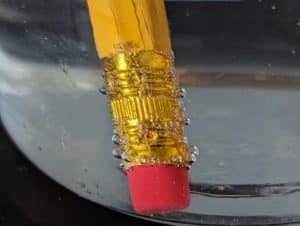Splitting Water Into Hydrogen and Oxygen
In this activity, your child will be splitting water into hydrogen and oxygen using electrolysis.
Materials
- 30 inches 20 or 22 gauge, stranded, electrical wire
- 2 Number 2 pencils, sharpened
- 1 1/2 teaspoons table salt
- 1 piece cardboard
- Scissors
- Spoon or glass stir rod
- 12 ounces Warm water, not boiling
- 1 spool Electrical tape
- 1 9-volt battery
- Eye protection for each student
- A pair of wire strippers, if you have them. Otherwise, an adult will need to use the means available to them to strip away about an inch of the outer sheathing of the wire to expose the wires inside.
- Wire cutters
Instructions
- Sharpen each pencil at both ends.
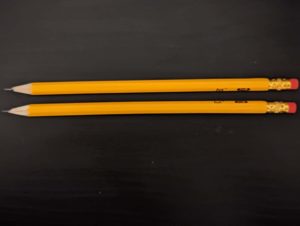
- Cut the cardboard to fit over the glass. A 3” x 5” size works well.
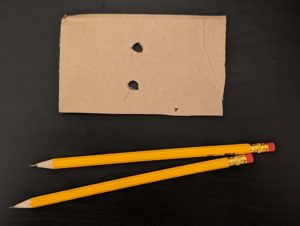
- Push the two pencils into the cardboard about an inch apart.
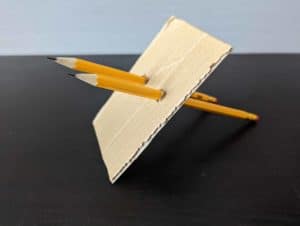
- Pour 12 ounces of warm water into a measuring cup, add the salt, and stir until the salt dissolves. Let it sit for about 3 to 5 minutes.
- Cut the wire into two 15" pieces using the wire cutters.
- An adult needs to do this step. Strip about an of the outer sheathing of the wire from the wire, exposing the wires underneath. If you have a wire stripper, it's super easy. Otherwise, an adult will need to remove the sheathing.
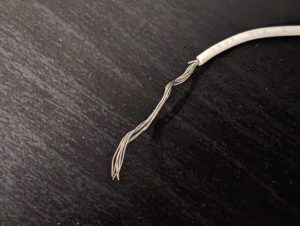
- Wrap one end of each piece of wire around the graphite pencil "lead". We are just trying to get it fitted properly. It will come unattached as you are trying to attach the other end to the battery. So, for now, we are just trying to get it formed to fit. Remove these from the pencil end.
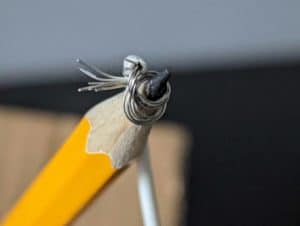
- Wrap one end (the end that was NOT wrapped around the pencil) of each wire to a terminal on the battery. Secure with electrical tape.
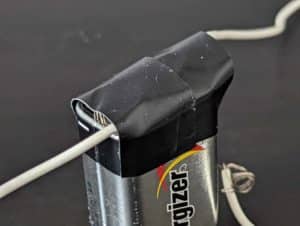
- You will need a helper for this part. Place the cardboard holder with pencils into the salt water and attach the wires to the pencil lead. You can tape the wire in place on the graphite end of the pencils. The metal part of the pencils in the water should not touch. Do not touch the exposed end of any wires.
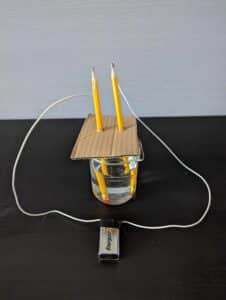
- Check to make sure all connections are secure. How can you tell electricity is present, look at the pencil erasers. What is happening? What do you think is creating the bubbles?
